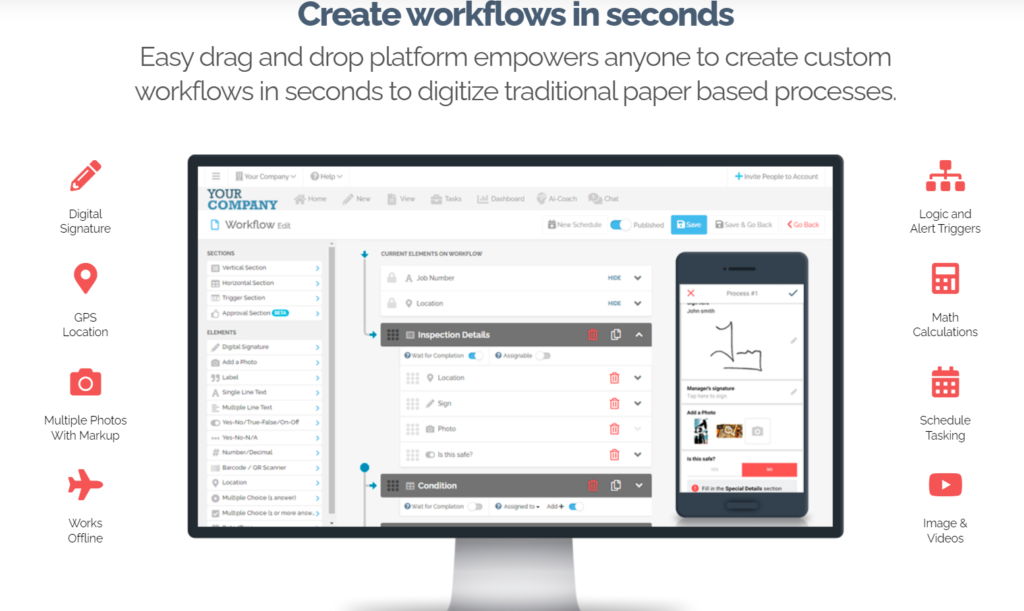The oil and gas industry is a complex and high-risk sector that requires meticulous attention to detail, particularly when it comes to asset inspection. Regular and thorough inspections are crucial to ensure the safety, efficiency, and longevity of assets. This article will delve into the three stages of inspection in the oil and gas industry and how FAT FINGER, a digital workflow procedure builder, can streamline and enhance this process.
Stage 1: Pre-Inspection Planning
The first stage of the inspection process involves comprehensive planning. This includes identifying the assets that require inspection, determining the type of inspection needed, and scheduling the inspection. It also involves gathering all necessary documentation and ensuring that all safety measures are in place.
With FAT FINGER’s drag and drop workflow builder, pre-inspection planning becomes a breeze. The software allows you to create mobile and desktop workflows that can be easily customized to suit your specific needs. This not only saves time but also ensures that no critical steps are overlooked.
Stage 2: Execution of the Inspection
The second stage involves the actual execution of the inspection. This includes visually examining the asset, taking measurements, and recording data. It may also involve using specialized equipment to detect potential issues that are not visible to the naked eye.

FAT FINGER’s mobile asset inspection workflow can significantly enhance the execution stage. With its augmented reality feature, inspectors can visualize data in a more interactive and engaging way. Moreover, the software’s ability to connect IoT devices allows for real-time data collection and analysis, leading to more accurate and timely inspections.
Stage 3: Post-Inspection Analysis and Reporting
The final stage involves analyzing the data collected during the inspection and generating a detailed report. This report should include any identified issues, recommended corrective actions, and a plan for future inspections.
FAT FINGER’s dashboards and integrations make post-inspection analysis and reporting a seamless process. The software’s artificial intelligence coaching can also provide valuable insights and recommendations, helping you make more informed decisions about your assets.
Case Study: FAT FINGER in Action
To illustrate the effectiveness of FAT FINGER, consider the case of a large oil and gas company that was struggling with inefficient and error-prone manual inspection processes. After implementing FAT FINGER’s mobile asset inspection workflow, the company was able to streamline its inspections, reduce errors, and improve the accuracy of its data. As a result, the company saw a significant reduction in asset downtime and maintenance costs.
Conclusion
In conclusion, the three stages of inspection in the oil and gas industry – pre-inspection planning, execution of the inspection, and post-inspection analysis and reporting – are all critical for ensuring the safety and efficiency of assets. With FAT FINGER’s digital workflow procedure builder, these stages can be streamlined and enhanced, leading to more accurate inspections and better asset management.
Ready to revolutionize your inspection process? Request a demo of FAT FINGER today or create a mobile asset inspection workflow for free and experience the difference for yourself.

